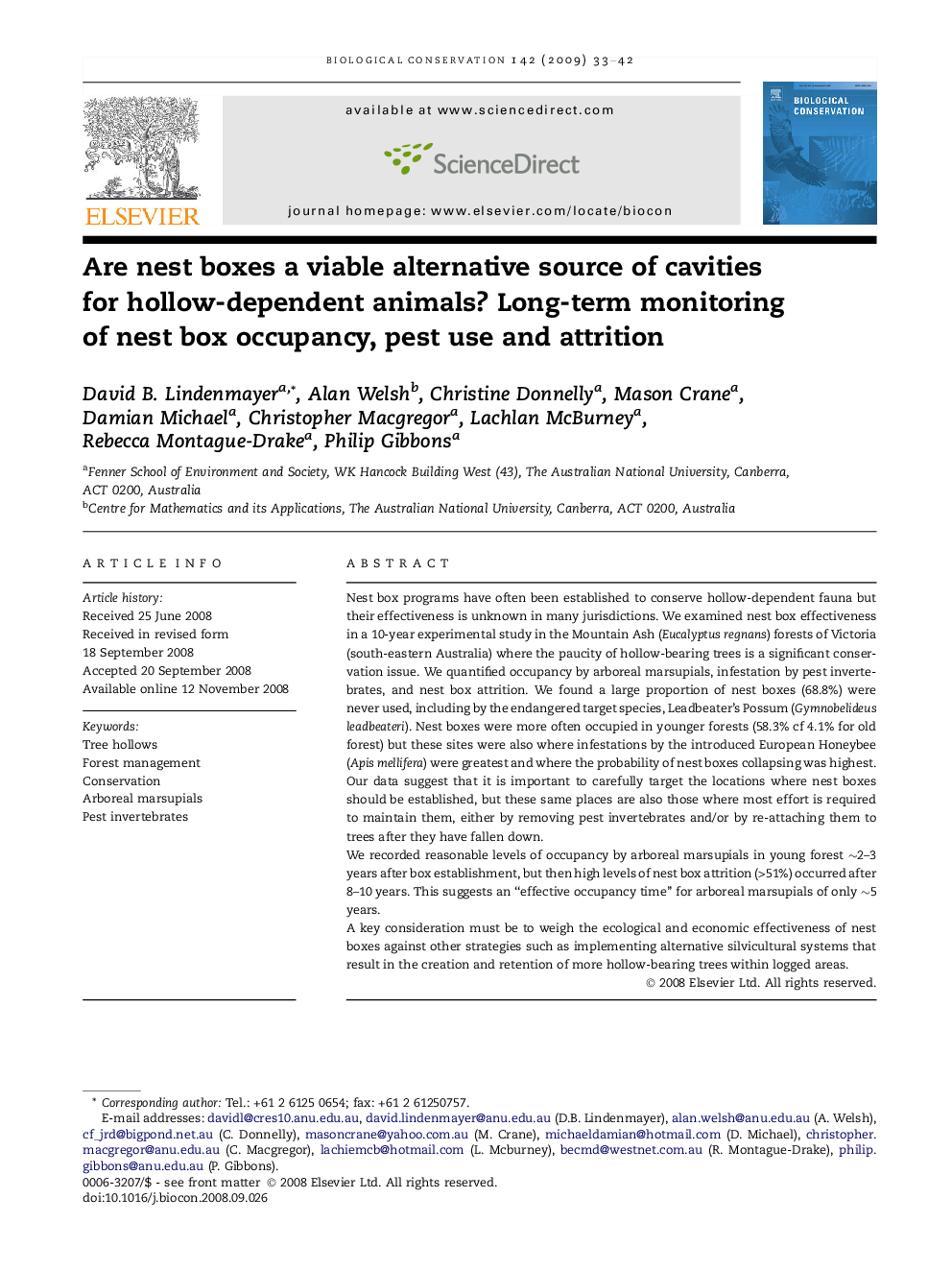| Article ID | Journal | Published Year | Pages | File Type |
|---|---|---|---|---|
| 4386752 | Biological Conservation | 2009 | 10 Pages |
Nest box programs have often been established to conserve hollow-dependent fauna but their effectiveness is unknown in many jurisdictions. We examined nest box effectiveness in a 10-year experimental study in the Mountain Ash (Eucalyptus regnans) forests of Victoria (south-eastern Australia) where the paucity of hollow-bearing trees is a significant conservation issue. We quantified occupancy by arboreal marsupials, infestation by pest invertebrates, and nest box attrition. We found a large proportion of nest boxes (68.8%) were never used, including by the endangered target species, Leadbeater’s Possum (Gymnobelideus leadbeateri). Nest boxes were more often occupied in younger forests (58.3% cf 4.1% for old forest) but these sites were also where infestations by the introduced European Honeybee (Apis mellifera) were greatest and where the probability of nest boxes collapsing was highest. Our data suggest that it is important to carefully target the locations where nest boxes should be established, but these same places are also those where most effort is required to maintain them, either by removing pest invertebrates and/or by re-attaching them to trees after they have fallen down.We recorded reasonable levels of occupancy by arboreal marsupials in young forest ∼2–3 years after box establishment, but then high levels of nest box attrition (>51%) occurred after 8–10 years. This suggests an “effective occupancy time” for arboreal marsupials of only ∼5 years.A key consideration must be to weigh the ecological and economic effectiveness of nest boxes against other strategies such as implementing alternative silvicultural systems that result in the creation and retention of more hollow-bearing trees within logged areas.
